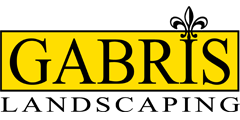Grass Fertilization
Our grass fertilization programs are designed to keep your lawn lush and green all year round. We tailor every customer’s application program to the needs of each yard. By combining the use of slow-release and immediate release products applied at the correct time, we can prevent fertilizer burns and excessive growth issues. Unlike our competitors, who focus on how they can make the most money, our application programs only utilize treatments when they will actually be effective. We save you money by avoiding applications while your lawn is dormant because treatments are much less effective during dormancy.
Fertilizing the grass may seem simple. Just go to the local hardware store, grab a few bags of fertilizer, throw it on the yard, and let it grow… right? Well, maybe it has worked in the past for you, but without a few key pieces of information, you may not always be so fortunate. A University of Missouri – Columbia turfgrass professor told us in a workshop one time to think of it as the opposite of “The Oyster Rule.”
What is “The Oyster Rule?” Good question. “The Oyster Rule” is probably only memorable because no one in Springfield, Missouri eats oysters. The rule is that you don’t eat oysters in months that end in the letter “R.” So basically you don’t eat oysters in September, October, November, or December. The professor said the key to fertilizing your lawn is to do the opposite of that rule. Which means the best months to fertilize your lawn would be September, October, November, and December. While this is a great memory tool, it requires some slight changes to the rule.
There are a few reasons for our adjustment to “The Oyster Rule” as it applies to the fertilization of grass. The first is simply customer demand. Customers expect to get their lawn fertilized in the Spring. It’s the way things have always been done, and everyone does it.
While we wish customer demand alone was a good enough reason to adjust “The Oyster Rule”, science and common sense seemed to be better reasons. Grass, even evergreen grasses such as fescue, go dormant in Missouri. When grasses are dormant, they slow their vital processes and limit their uptake of nutrients. Growth stops and rather than diverting energy into continuing growth, energy is stored in the root system to bring the lawn back the following year. Since lawn mowing services in our area are no longer needed by the middle of November because the grass stops growing, it’s safe to say dormancy begins in mid-November. Thus, why would we want to fertilize in November and December?
Therefore we decided to use a slow-release formula fertilizer in September so that it can feed the lawn for September, October, and November wearing off just as the lawn goes dormant anyhow.
Continuing the logic behind our fertilization program, the entire purpose of “The Oyster Rule” was to avoid the detrimental side-effects of having a lawn with high nitrogen during the fungus season. Research shows that many of the most common turf diseases in our area could be avoided by simply controlling the timing and volume of nitrogen content in a turf stand. Since lawn fungus season starts as early as mid-April and often lasts through June in Springfield, Missouri, our goal is to keep the nitrogen levels to a minimum in the Spring.
One way we do this is through the use of slow-release granular fertilizers. However, we also take consideration into the make-up of our fertilizer products.
Spring can be a great time to use a fertilizer with a higher percentage of phosphates and potassium as opposed to nitrogen. When reading a fertilizer label there are usually 3 numbers separated by two dashes. From left to right those numbers (N-P-K) stand for “nitrogen,” “phosphates,” and “potassium.” A few common fertilizer mixes would be 10-10-10 or 28-3-10.
If you can’t find a slow-release formula to feed the nitrogen into the soil in small doses over an extended period of time, the 10-10-10 would be a better Spring-time grass fertilizer than a 28-3-10. The numbers are actually percentages of the nutrient in each bag, so after some math you can figure out exactly how many pounds of nitrogen per 1000 square feet you are applying.
It is commonly recommended to aim for 1 pound of nitrogen per 1,000 square feet of grass when fertilizing. We tend to go a little lighter in the Spring, and follow up with a slightly heavier Fertilization in the Fall. By using less nitrogen in our Spring fertilizer, we are able to allow the plants to focus more on root growth to encourage tillering. Tillering is the widening or thickening of a clump of grass that helps make lawns look thick and full.
It should be pretty obvious that fertilizing your grass can be a lot more complicated than it seems at first glance. If you live in Springfield, Ozark, or Nixa, Missouri, this is yet another service our team of educated professionals can offer.


